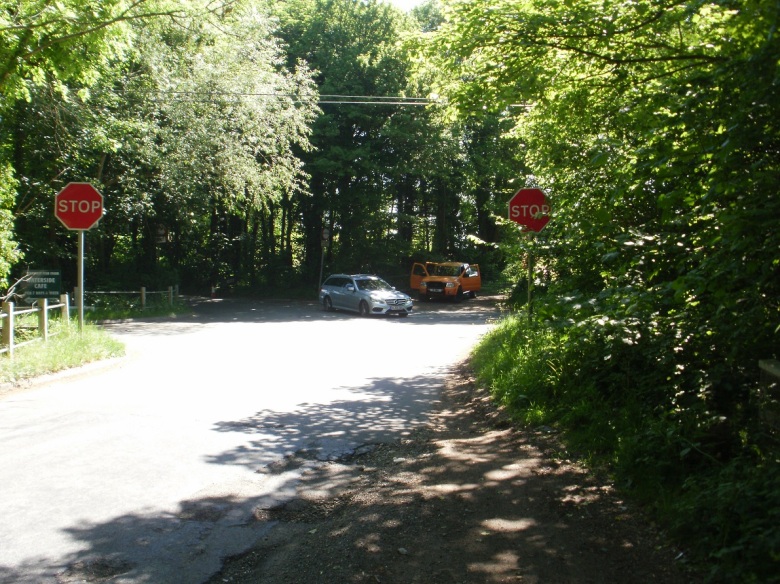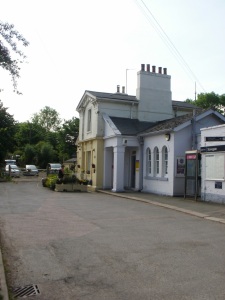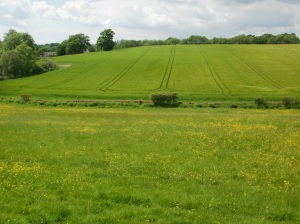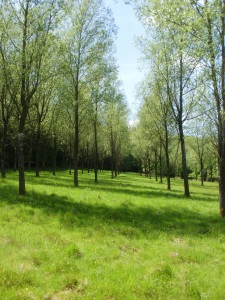PROLOGUE
Our last caching trip on our Sandhurst (Berks) to Sandhurst (Kent) finished yards from the Kent border, and when we drove away we had thoughts of striding purposefully into Kent and onto Sandhurst… however since our last visit we were asked to undertake a small diversion while still in Sussex.
The last cache we found on our previous trip contained a sheet of paper with the ‘Northings’ for the Great Wigsell Multi. Another cache, unfortunately now archived, contained the ‘Eastings’. This meant the Great Wigsell Multi was unreachable. The cache owner of these three caches contacted us with the missing information and asked, if we had time, to visit the Multi as it contained a trackable which needed to be moved on.
And so instead of heading East into Kent, we headed further South through light woodland for a 1/3 of a mile. We were pleasantly surprised on our arrival. Not only was the cache there after an eight month gap…but it was an ammo can!

We released the trackable and headed back to our car, wondering how many other cache owners we would be helping on the this holiday (see previous blog for more details).
And so to Kent.
THE SANDHURST WALK
Before finding the Great Wigsell Multi our day had not begun well. There had been a major accident and our route to the Kent border had been blocked. A plethora of side roads were also blocked with roadworks so we had had an interesting drive to our start point.
Our route was to take us 2/3 mile along a narrow country lane, unfortunately this was being used as one of the few roads open. We edged our way along, taking care watching out for traffic.
Or at least that was the agreed plan.
Sadly Mr Hg137 decided to check maps/GPS whilst walking up the pavement-less road and failed to spot a large pot-hole.
He landed considerably worse for wear, face down, lying on the tarmac.
Grazed wrists, ripped trousers, and several layers of skin removed from a lower leg. Ouch!
He limped to a gap in the roadside, where a passing motorist provided us with a few tissues which staunched the wounded leg. We both thought that having walked so far on our Sandhurst route, we would fail with just 2.5 miles to walk!
We sat. Annoyed.
Eventually Mr Hg137 stood up. The bleeding had ceased, and he could put weight on the injured leg (hidden behind the ripped trousers).
We tentatively walked on.
We were following, for the last time, the Sussex Border Path, which up to that point had been brilliantly signposted. Sadly when we needed a post to show us the way to a cache 300 feet away, it was missing. No obvious track through farmland, and with some way still to go, we abandoned our search before it really got going. We knew we were getting close to our destination though as the cache belonged to a series entitled “Sandhurst Cross Circular Walk”.
The route took us through a farm. Clearly the farmer had had trouble with hikers, as there were a plethora of “Keep to the Path”, “Close the Gate” type signs. However the farmer had failed to mark the signpost clearly as we approached his back garden, and the fingerpost was angled for us to walk straight through his garden rather than a tiny path just by the fence line.
It was shortly after this we found our first Kent cache on the walk. Hidden in tree roots. It had been well over an hour since our finding of the Sussex Multi so were grateful for an easy find.
Our route took us through woodland, and around farm fields. We crossed far too many stiles for our liking (too tall for Mrs Hg137, too wobbly for Mr Hg137’s now-healing leg).
And then we arrived at a Roman Road – and another cache. Again hidden in tree roots. Here though we had a long search. Lots of trees, and lots of roots.
We were eventually successful and strode/limped purposefully the 1/4 mile into the village of Sandhurst.
A beautiful village green and fabulous clock tower. Our journey was complete.
Our final cache was under the clock tower, and we waited ages, for a bus driver to vacate the seat on which the cache had been placed.
A fabulous setting for the end of our walk!
EPILOGUE
And so our walk was at an end. We finished in high Summer on a boiling hot day. We had started in the height of Winter, with ice on the ground. We had caught trains and buses. We had used many a long distance path including the Blackwater Path, The North Downs Way and the Sussex Border Path. We had walked beside canals, rivers and underneath a major flight path. We’d walked over Surrey’s highest hill, and walked through the claggy clay of the Weald. We’d undertaken quite a few Church Micros and learned about such diverse people as an Astronomer Royal and the founder of Ottawa. We even saw the Flying Scotsman!
We’d heard lots of birdsong and been lucky enough to see deer, a heron, an adder and a kingfisher.
Our route would have been approximately 60 miles if we had walked in a straight line but various constraints (Army land, Gatwick Airport, reservoirs) prevented this. Our convoluted route of 86 miles kept to footpaths where we could, avoided major towns and where possible picked a route with caches to find. Our route is visible here https://www.geocaching.com/track/map_gm.aspx?ID=6190539
An excellent adventure which we thoroughly enjoyed.
As we noted on January 1, there is another Sandhurst, near Gloucester, a journey which we will undertake probably next year.
Do look out for that!
































































































































